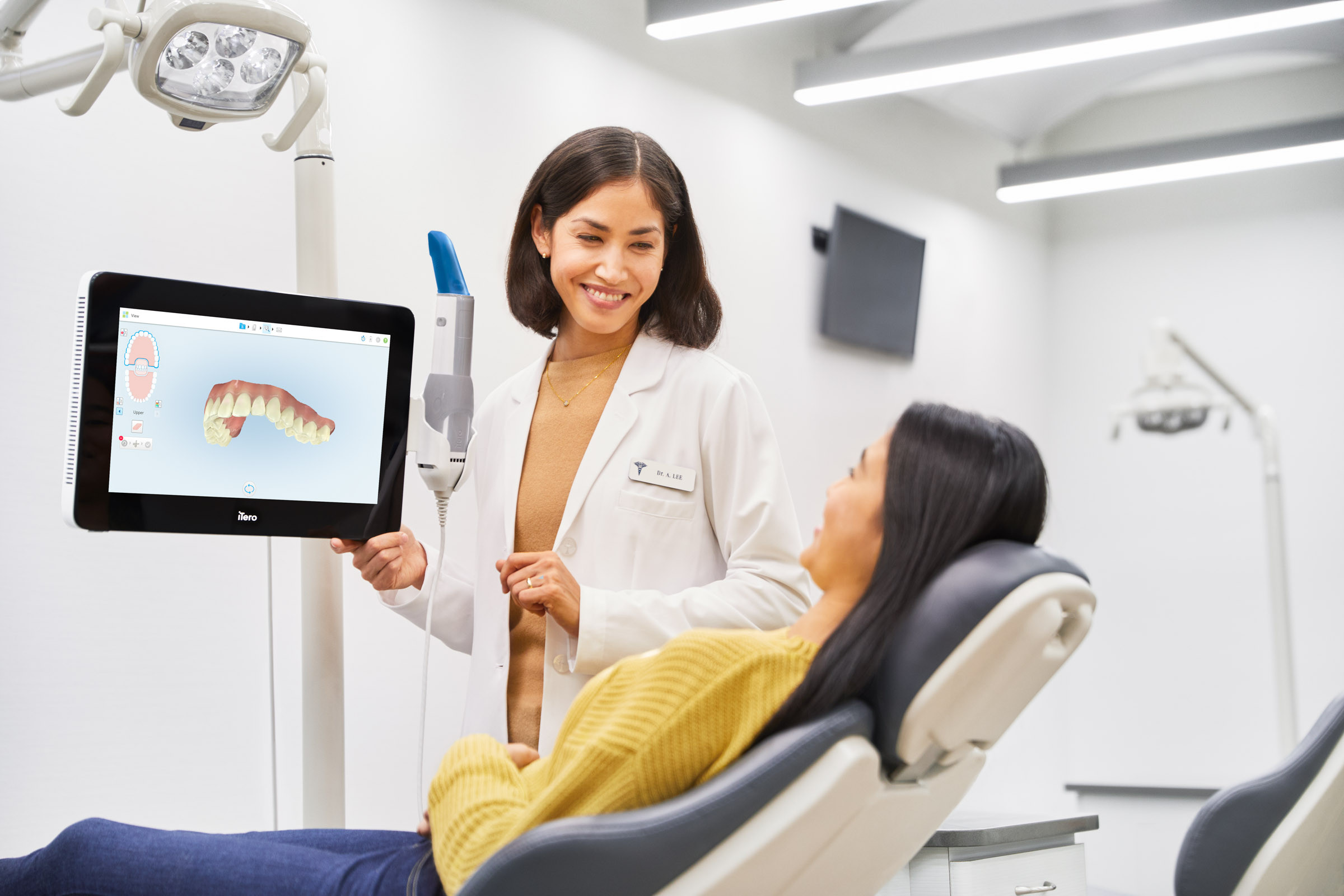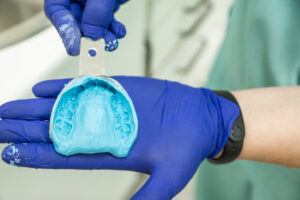Digital Scanning is nothing new in dentistry, but in the last few years, has become vastly more popular since the accuracy of work being produced from scanning is being appreciated in the industry.
As a ‘wet fingered’ dentist I purchased my first scanner in 2017 for two reasons –
1) I detested taking silicone impressions for restorative work and
2) I was starting my Invisalign career and had heard the benefits of the iTero. I hadn’t fully realised the capabilities of the machine and I have zero regret – and want to share the reasons I feel its sensible to invest.
Why Are You Waiting?
Its natural, whilst making a big investment, to do your research around the topic. I compare this to buying a car. This is usually going to be comparing different models for their different functionalities which suit your life (practice), comparing prices and wondering when the next ‘model’ is being released. I had been doing the same until I gave myself a deadline into purchasing an iTero, because I was doing the Invisalign course and I realised how hard I found it to take a decent full arch Invisalign impression. There’s no way I had the patience on possibly taking them a few times a day and either repeating multiple impressions for the perfect impression OR accepting minor faults in the impression and sending it off anyway.
I was also worried about making the large investment on the newest scanner, and then hearing from a rep that a new model is coming out soon making my scanner feel outdated. In fact, that exact situation did happen – I got my iTero and soon after a new model came out. I, however, still had no regret of the situation for a few reasons:
1) Even a few weeks/months of having a scanner I would call priceless for not having to take impressions.
2) The new models are always more expensive anyway.
3) I feel that all of the better-known scanners on the market are all ‘good enough’ now – and the newer models are only partially better than the last.
My Conclusion – the rate of change of new scanners is slowing down due to the high quality they already reach, so just take the plunge now.
Saving Time
One of the biggest advantages of buying a scanner is the huge saving of time you’ll make. We are all very aware that a dentist can only work a certain number of hours a day. If you’re going to run a successful practice where you’re proud of the dentistry and also proud of your fees (where you think the patient is getting a good deal) – you need to be efficient with your time. You don’t want to be having to charge your patients extra money for the extra time your restoration took you waiting for a silicone to set. You don’t want to be running late when your first impression had a void. You could even get your team (nursing, TCO) scanning for you – freeing up your time to do other things. If you’re in a practice where you take a lot of impressions, or do a lot of clear aligner therapy, sit down and work out the time saving opportunity – you won’t regret it.
There are also advantages of your lab instantly receiving your scans (wherever they are in the world) and being able to progress with your work. Gone are the days of wasting time sending impressions via courier, or even losing impressions in the post.
Saving Money
We already discussed the time-saving ability which is going to equate to a large saving of money over time. The next saving is going to be on impression materials. While you’re sitting down working out the time saved, work out how much you spend on silicones and alginates – I think it would shock you!
Work Smart, Not Hard
It’s natural that we all want an easy life. Taking impressions does not equate to an easy life for you nor your patients. Having a silicone impression shoved down your throat for more than a few minutes is enough to make anyone wretch. We have all either experienced or heard of a story of a silicone getting stuck in someone’s mouth and being cut out, or pulling out a tooth or restoration. This is enough to make any dentist sweat. If you work in an ortho practice I’m sure you’ve seen a patient with mobile teeth during treatment. Imagine taking a refinement impression on this person?
Impressions are also messy. Impression material seems to get everywhere – your patients face, random corners of the surgery, your scrubs, and somehow your patient’s expensive jumper. Your nurse is going to love you for investing in a scanner!
Communication, Marketing and Data Storage
One of the real advantages of a scanner I never appreciated was the power for patient and team communication.
I quickly adopted the habit of scanning every single patient who sat on my dental chair. For new patients it’s an easy way to ‘walk’ your patient around their mouth, discussing issues and potential solutions. You may not be a clinician that has a problem with patients coming back for treatments – but a lot could be surprised as a patient’s adoption to longer-term care – e.g., an ortho-restorative approach for long-term protection, implants or even rehabilitation. In regards to multi-disciplinary planning it’s so easy to sit down with a patient’s scan on screen and discuss treatment with the relevant specialist dentists.
Being able to compare a new scan to a scan taken a couple of years ago has huge impact for both clinician and patient – being able to spot worsening wear or recession, or conversely being able to view the benefits of your treatments provided. Anyone with a scanner will be able to tell you a story how a case was made easier being able to refer to a previous scan and print a model – there are no end of uses.
This storage of data also has a huge benefit for consent and storage of records – and imagine the free space its freeing up for storing hundreds of stone/plaster models.
Certain scanners (iTero) also have the benefits of instantly showing a patient what their teeth could look like after Invisalign treatment – a powerful ethical marketing tool.
Self-Reflection and Work Accuracy
I was a clinician who thought my preps and restorative margins were ‘good enough’ before I had a scanner. It was only since I bought a scanner – when I could zoom into a crown prep in huge detail, that I truly realised there’s always room for improvement. If you continue the cycle of reviewing your own work, criticising and modifying then you grow as a clinician quickly.
I think it’s always natural to have the slight butterfly in your stomach feeling when coming to fit a crown thinking ‘I hope this is a perfect fit’, ‘is the bite going to be perfect’, ‘was my impression great’. I can almost guarantee you’re going to have a lot less worries when working with a scanner. In my opinion, there is less margin for error in the start-to-finish process making an indirect restoration digitally rather than conventionally. A lot has to be perfect from capturing an impression, pouring a model, waxing up a crown, casting a crown, even sending the impression in the post! Scanning a prep or multiple preps (in the majority) is a lot easier, and the lab communication can be vastly improved and even immediate.
It’s all there in black or white – (or even colour)!
The Right Scanner for You
When you buy your scanner above a certain ‘pay grade’, as mentioned previously, there may not be much difference in the quality of scan provided between brands – and it’s going to be good enough whichever scanner you choose. Maybe something of more importance is how the scanner will fit to your particular practice. The portability of said scanner is something to be thought about. If you’re a dentist moving between practices or even a practice on multiple floors – it may be sensible to consider a scanner which is more mobile. Most companies make scanners which connect to laptops that tend to be more mobile, and some even have scanners with a smaller mobile screen and wand integrated together – which may be prone to less laptop software integration issues.
If you’re a practice on one floor where the scanner can be wheeled between surgeries – it could be argued the scanners on the wheel stand have more impact for patients and less connections to go wrong.
In summary, there are a huge number of advantages of moving over to digital dentistry, and this article only dips a toe into the clinician advantages – not even starting on the lab side.
Digital dentistry offers a wow experience for both clinician and patient – I’m confident that any practice investing in the technology won’t regret it, to the point they will probably find themselves needing a few!
Article by George Cheetham





